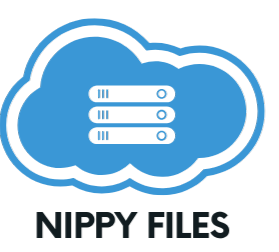
Best File Sharing Services of 2025—Why NippyFiles Stands Out
August 20, 2025
The Ultimate Guide to Becoming a Gimkit Host: Engaging Students with Fun and Learning
September 4, 2025In today’s digital world, sharing files quickly and efficiently has become a necessity—whether you’re collaborating on a project, sending large media files, or transferring documents to a colleague. While cloud storage services like Google Drive, Dropbox, and OneDrive offer robust long-term solutions, they may not always be the best fit for short-term needs. That’s where temporary file hosting comes in.
But what exactly is temporary file hosting? Why should you consider using it? And how does it benefit your workflow, security, and overall digital experience? In this comprehensive guide, we’ll dive deep into the concept of temporary file hosting, explore its benefits, and explain why it’s becoming an essential tool for individuals and businesses alike.
What Is Temporary File Hosting?
Temporary file hosting, also known as ephemeral file sharing or short-term file hosting, refers to online services that allow users to upload files for a limited period. Unlike traditional cloud storage platforms that store files indefinitely (unless manually deleted), temporary file hosting services automatically delete uploaded files after a set duration—usually ranging from a few hours to 30 days.
These services are designed for one-time or short-term file transfers. Once the file is uploaded, the user receives a unique download link that can be shared with others. After the file expires, the link becomes invalid, and the file is permanently removed from the server.
Temporary file hosting is ideal for:
- Sending large files that exceed email attachment limits
- Sharing time-sensitive documents
- Distributing media files (videos, photos, audio)
- Collaborating on projects without cluttering permanent storage
- Protecting sensitive data by ensuring automatic deletion
Popular examples of temporary file hosting services include WeTransfer, Send Anywhere, File.io, and Temp-Mail’s file-sharing feature. These platforms prioritize ease of use, speed, and security—making them ideal for quick, hassle-free file transfers.
How Does Temporary File Hosting Work?
The process of using a temporary file hosting service is simple and user-friendly:
- Upload the File: Visit the temporary file hosting website or app and upload your file. Most platforms support drag-and-drop functionality.
- Set Expiration Time: Choose how long the file should remain available (e.g., 24 hours, 7 days, or 30 days).
- Get a Shareable Link: Once the upload is complete, the service generates a unique URL.
- Share the Link: Send the link via email, messaging apps, or social media.
- Automatic Deletion: After the expiration time, the file is automatically deleted from the server.
Some advanced temporary file hosting platforms also offer:
- Password protection
- Download limits (e.g., file can only be downloaded once)
- Encrypted transfers (end-to-end encryption)
- No registration required
This simplicity and automation make temporary file hosting a go-to solution for users who value speed, privacy, and minimal digital clutter.
Key Benefits of Using Temporary File Hosting
1. Enhanced Security and Privacy
One of the biggest advantages of temporary file hosting is improved data security. Since files are automatically deleted after a set time, there’s less risk of unauthorized access or data leakage. This is especially important when sharing sensitive documents like contracts, financial records, or personal photos.
Many temporary file hosting services use encryption to protect files during transfer and storage. Some even offer password-protected links and one-time download options, ensuring that only intended recipients can access the content.
Compared to email attachments—which can be forwarded, stored indefinitely, or intercepted—temporary file hosting reduces the chances of data being misused.
2. No Storage Clutter
Traditional cloud storage platforms can quickly become cluttered with outdated or irrelevant files. Over time, this can lead to wasted storage space, slower performance, and difficulty finding important files.
With temporary file hosting, you don’t have to worry about manually deleting files or managing storage quotas. Everything is automatically cleaned up, helping you maintain a clean and organized digital workspace.
3. Faster File Transfers
Temporary file hosting services are optimized for speed. They often use high-bandwidth servers and content delivery networks (CDNs) to ensure fast upload and download times—even for large files.
This is particularly useful when sending high-resolution videos, design files, or software packages that would otherwise take minutes or even hours to send via email or standard cloud storage.
4. No Registration or Account Required
Many temporary file hosting platforms allow users to upload and share files without creating an account. This makes the process faster and more convenient, especially for one-off file transfers.
You can simply visit the website, upload your file, get a link, and move on—without dealing with sign-ups, passwords, or terms and conditions.
5. Cross-Platform Compatibility
Temporary file hosting services are typically web-based and accessible from any device with a browser—whether you’re using a Windows PC, Mac, smartphone, or tablet. This cross-platform compatibility ensures seamless file sharing across different operating systems and devices.
Some services also offer mobile apps for even greater convenience.
6. Ideal for Large File Sharing
Email providers often impose strict limits on attachment sizes—usually between 10MB and 25MB. This makes it nearly impossible to send large files like videos, presentations, or software installers.
Temporary file hosting services, on the other hand, often support file sizes up to 2GB, 5GB, or even higher. This eliminates the need to compress or split files, saving time and preserving quality.
7. Time-Sensitive Sharing
When you need to share a file that’s only relevant for a short period—such as a draft document, event invitation, or promotional video—temporary file hosting ensures the file doesn’t remain accessible indefinitely.
This prevents confusion and ensures that outdated versions aren’t accidentally accessed or used.
8. Reduced Risk of Data Retention
Permanent cloud storage services may retain data for compliance, backup, or legal reasons—even after you delete a file. With temporary file hosting, deletion is automatic and guaranteed after the expiration period.
This is especially valuable for businesses handling confidential information or complying with data protection regulations like GDPR or HIPAA.
Common Use Cases for Temporary File Hosting
1. Business and Professional Collaboration
Teams often need to share large design files, reports, or presentation decks. Temporary file hosting allows seamless collaboration without clogging up shared drives or email inboxes.
For example, a marketing team can upload a high-resolution video ad and share it with a client for review. Once the feedback is received, the file expires—keeping the project organized and secure.
2. Sending Personal Media
Want to send vacation photos or a home video to family members? Instead of attaching them to an email or uploading them to a public social media platform, you can use temporary file hosting to share them securely.
The recipient gets a direct link, views the content, and the file disappears after a few days—protecting your privacy.
3. Software and App Developers
Developers frequently need to share beta versions, patches, or build files with testers or clients. Temporary file hosting provides a secure and efficient way to distribute these files without exposing them to the public.
With download limits and password protection, developers can control who accesses the software and for how long.
4. Freelancers and Remote Workers
Freelancers often work with multiple clients and need to send deliverables like design mockups, written content, or audio recordings. Temporary file hosting simplifies this process by eliminating the need for long-term storage or complex file-sharing workflows.
It also reduces the risk of clients accessing outdated versions of files.
5. Educational Purposes
Teachers and students can use temporary file hosting to share assignments, presentations, or research materials. For example, a student can submit a large video project via a temporary link instead of struggling with email attachments.
Once the submission is reviewed, the file expires—keeping the system clean and organized.
Temporary File Hosting vs. Traditional Cloud Storage
While traditional cloud storage is essential for ongoing file management, temporary file hosting fills a critical gap for quick, secure, and clutter-free sharing.
Choosing the Right Temporary File Hosting Service
Not all temporary file hosting platforms are created equal. When selecting a service, consider the following factors:
1. File Size Limits
Ensure the service supports the file sizes you typically work with. Some free platforms limit uploads to 100MB or 2GB, while premium options allow up to 10GB or more.
2. Expiration Options
Look for customizable expiration times—such as 1 hour, 24 hours, 7 days, or 30 days—so you can match the file’s lifespan to your needs.
3. Security Features
Choose a service that offers encryption, password protection, and download limits to enhance security.
4. No Registration Policy
If you value speed and simplicity, opt for a platform that doesn’t require account creation.
5. User Interface
A clean, intuitive interface makes the upload and sharing process faster and more enjoyable.
6. Download Tracking
Some services provide analytics, such as the number of downloads or the time of access—useful for tracking file engagement.
7. Mobile Support
Check if the service has a mobile app or a mobile-friendly website for on-the-go file sharing.
Popular temporary file hosting services that meet these criteria include:
- WeTransfer (free up to 2GB, premium plans available)
- File.io (encrypted, auto-delete after download)
- Send Anywhere (cross-platform, PIN-based sharing)
- Smash (secure, password-protected links)
- JumpShare (great for creatives, supports previews)
Is Temporary File Hosting Safe?
Yes—when used responsibly and with a reputable service. Temporary file hosting is generally safe due to:
- Automatic deletion reducing exposure time
- Encryption during transfer and storage
- No long-term data retention
- Optional password and download restrictions
However, users should still:
- Avoid uploading highly sensitive data (e.g., social security numbers, bank details)
- Use strong passwords when available
- Verify the recipient before sharing links
- Stick to well-known, trusted platforms
Avoid services that lack encryption, display excessive ads, or require unnecessary personal information.
Final Thoughts: Why You Should Use Temporary File Hosting
In a world where digital clutter, data breaches, and inefficient workflows are common challenges, temporary file hosting offers a smart, secure, and streamlined solution. Whether you’re a professional sharing large project files, a student submitting assignments, or someone sending personal photos, temporary file hosting simplifies the process while enhancing privacy and efficiency.
By automatically deleting files after use, these services reduce the risk of data leaks, save storage space, and eliminate the need for manual cleanup. They’re fast, easy to use, and often require no registration—making them accessible to everyone.
As remote work, digital collaboration, and online communication continue to grow, temporary file hosting is no longer just a convenience—it’s a necessity. Embracing this technology can improve your productivity, protect your data, and keep your digital life organized.
So the next time you need to send a large file or share time-sensitive content, skip the email attachment and try a temporary file hosting service. You’ll save time, reduce clutter, and share with confidence.




